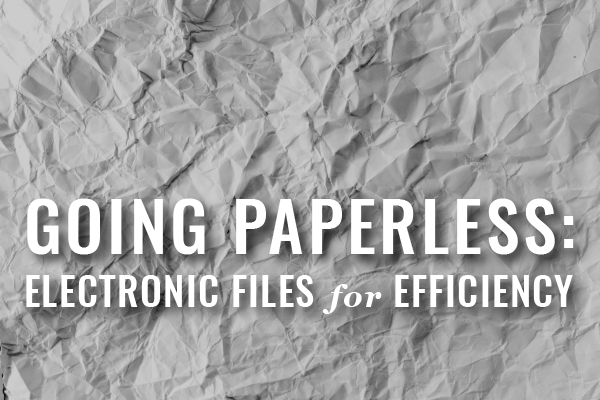Your success as a lawyer depends greatly on how efficiently you operate. Here’s how to keep paper to a minimum in your practice to maximize your productivity.
We thank the team at Lawyerist.com for this helpful guest post. Lawyerist is home to the largest online community of solo and small-firm lawyers in the world, where we help lawyers start, manage, and grow successful practices.
“Going paperless” is nothing new to the legal world. Federal courts have been paperless for several years now, and many state courts have begun following suit. While several law firms have gone paperless, many continue to rely on a massive amount of paper to get their work done.
If you’re running one of these firms, it’s time to join the ranks of the paperless law firms. We understand you may have concerns, so let’s address one right away: going paperless doesn’t mean your firm will be paper-free.
Paperless Doesn’t Mean Paper-Free
The reality of law-firm operations is that you will still have to deal with paper. There may still be intake forms, you will still have checks to scan, and there will always be clients who prefer hard copies. You will probably still receive paper documents from outside parties. The goal here, however, is to use less paper, not be entirely free of it.
Still, even though you must handle some paper, it is important to set up your office in a way that allows you to be as paper-free as possible.
How to Turn Your Law Firm into a Paperless Machine
To create a paperless law firm, start by creating a workflow for digitizing and handling paper. To do this, you need to create a gate.
What is a gate? In general, it is a step or physical place that helps you understand where your paper files are in your paperless process. This gate is often an inbox or paper file holder. Before the gate, you will have a mix of paper and digital files. After the gate, everything you use daily should be digital.
Decide what you will do once you move your files from your gate. The first step is obvious: scan them! But then you must choose to either file each document or shred it.
Be diligent about moving that paper document through to its final home. Once you remove it from your inbox, scan it. Once you scan it, remove it from your scanner and either file it into your filing cabinet or put it in a shredding bin.
As you begin to scan in your documents, you will want to be careful about how to organize your files. Remember, your digital files are what you will be working with moving forward. You must be diligent about working out of your digital files and you must secure those files and build in redundancies to protect your online files.
Think of it this way: your electronic file is your real file. Everything else is there just in case, just for the time being. This will help you create a new workflow that prioritizes your electronic file.
Going paperless is one of many law-firm process improvements. There are many things you can do to improve your law firm’s processes. As your productivity improves, you can serve your clients better. What are you doing that could be improved? Take the Lawyerist Small Firm Scorecard(TM) assessment to find out.
Related Resources:
Resources for Going Paperless (Mass LOMAP Law Practice Startup Kit)
Other Tech Topics (Law Practice Startup Kit)
Are you ready to move your law practice to the cloud? (Mass LOMAP Blog)
Practice Law, Not Paper Pushing (Mass LOMAP Webinars for Busy Lawyers)




